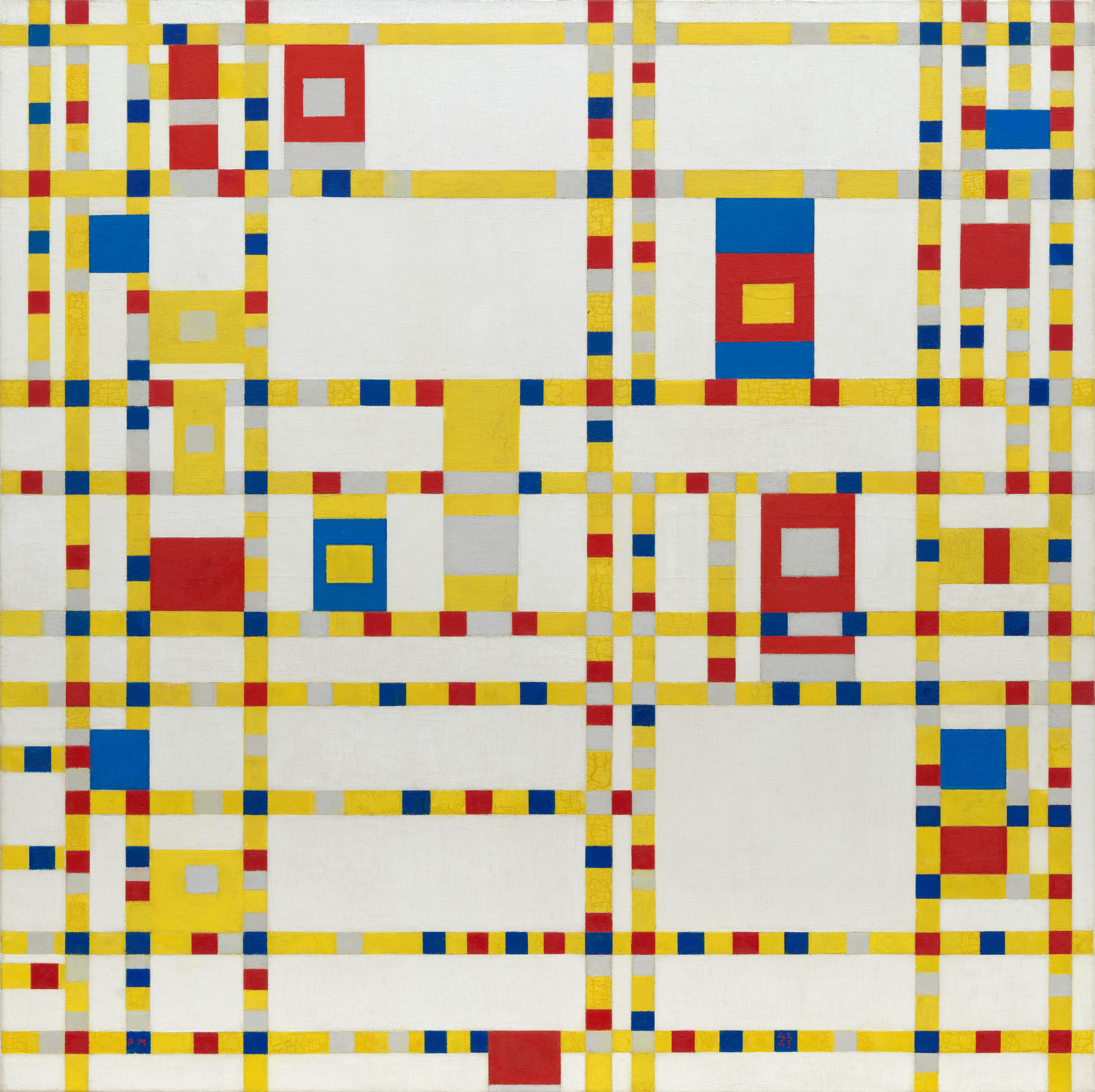Jazz musician, Jason Moran: As a pianist, I describe it as a player piano roll.
What seems to be the left hand is all of the smaller squares that are, you know, just continuing to wipe across the painting from left to right. The right hand is the larger piece. That's a C. The two blues are C. And then those two up there...this is a really a score. And so the larger pieces are the solo [piano notes]. The red is [piano notes]...I don't know, some shit like that.
In the way that that jazz uses the story, you know, the narrative, this is generally a thing uttered on the bandstand, one musician to another, they say tell your story, right? It seems that on the surface that the work makes no sense and that people are all talking all at the same time—much, you know, I'm sure the way people, when they first may have encountered a painting like this, or even today, when a visitor walks into the room and says, "Well, I could have done that."
For us, as artists, we know that the most difficult thing to attain is how do we get through all this rigorous work to then make a sound that seem so arbitrary, that can fall away so fast, seems so simple and also can also be dismissed And it's that fine line that I think the great artists have been able to tread so well. Because they question the viewer and they question that listener.
Leah Dickerman: Is that a new Jason Moran piece?
Jason Moran: Well, no, it's his piece. That's definitely Mondrian. He definitely wrote that. He definitely wrote that.
